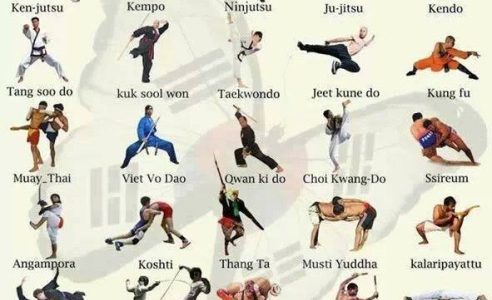Comprehending The Basic Distinctions Between Typical Martial Arts And Modern Combat Sports
Comprehending The Basic Distinctions Between Typical Martial Arts And Modern Combat Sports
Blog Article
Developed By-Valentine Snedker
When you consider martial arts, do you lean a lot more towards the traditional techniques or the modern battle sporting activities? Each course offers one-of-a-kind benefits and experiences, formed by their philosophies and training techniques. Traditional martial arts stress personal development and self-control, while modern-day combat sports focus on competitors and efficiency. Comprehending these differences can lead you in choosing the best approach for your trip. But exactly how do these differences show up in training and ideology?
The Viewpoint and Background Behind Conventional Martial arts
While many individuals link martial arts with physical battle, the ideology and history behind conventional martial arts run much deeper. You'll discover that these disciplines emphasize personal development, technique, and respect.
Stemming from ancient techniques, conventional martial arts were typically created for Self-Defense and spiritual growth. They personify principles such as balance, consistency, and self-constraint, directing practitioners past simple fighting skills.
As you educate, you'll not only learn methods but also obtain insights into the culture and worths that formed these arts. The rituals and practices, often given with generations, cultivate a feeling of area and belonging.
The Competitive Nature of Modern Battle Sports
Modern fight sporting activities have actually transformed the landscape of martial arts into a highly competitive arena, where professional athletes challenge in a test of skill, technique, and endurance.
You'll notice that competitors are frequently arranged with strict policies and regulations, guaranteeing fair game and security. These occasions attract huge audiences, fueling the enjoyment and strength of matchups.
Athletes educate carefully, not just for physical expertise however also for mental toughness, recognizing that every detail counts in the ring. The adrenaline thrill during competitors is palpable, as fighters push their limits to claim success.
Fans appreciate the athleticism and creativity involved, making modern battle sports a thrilling phenomenon that remains to evolve and astound lovers worldwide.
Training Techniques and Techniques: A Comparative Evaluation
The competitive ambience of contemporary fight sporting activities needs innovative training methods that differ considerably from conventional martial arts.
In modern training, you'll concentrate on details strategies, competing, and conditioning, usually using drills that simulate real battle circumstances. You'll see a focus on quantifiable performance and regular competitors to analyze your skills.
In which martial arts use nunchucks , traditional martial arts prioritize types, katas, and philosophical trainings, usually emphasizing technique and respect over competitors.
Training is normally less intense and may include recurring practice as opposed to real-time sparring.
While both approaches develop ability and health and fitness, modern fight sports provide a much more vibrant and adaptable training environment, preparing you for prompt challenges in the ring or cage.
Pick the path that straightens with your objectives and interests.
Final thought
In choosing between typical martial arts and contemporary fight sports, it truly boils down to what you value many. If you're looking for individual growth, self-control, and a feeling of neighborhood, conventional arts could be your best fit. Yet if you grow on competition and real-time challenges, contemporary combat sporting activities could be the method to go. Eventually, https://coach-teaches-kids-martia99876.blogolenta.com/31361700/the-trip-of-exercising-martial-arts-discloses-significant-benefits-for-psychological-and-physical-wellness-motivating-you-to-check-out-how-this-discipline-can-change-your-life provide special advantages, so it's all about straightening your training with your personal objectives and rate of interests.
